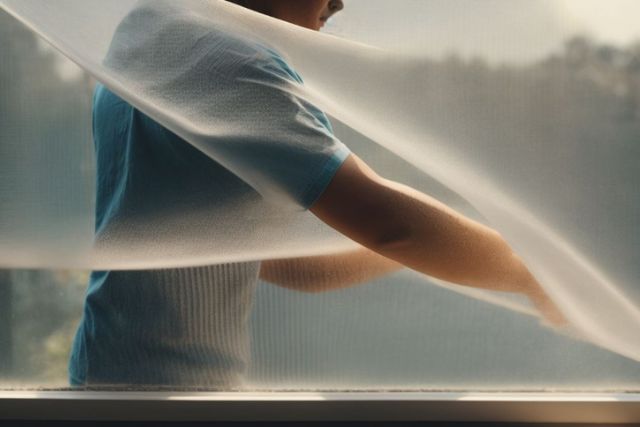Keeping your window screens clean is an essential part of maintaining your home. Not only does regular cleaning improve the appearance of your windows, but it also helps to prolong the life of your screens by preventing dirt and debris from building up.
In this article, we will discuss the tools you need to clean your window screens, as well as step-by-step instructions on how to clean them without having to remove them. We will provide some helpful tips to ensure that your screens stay in great condition for years to come.
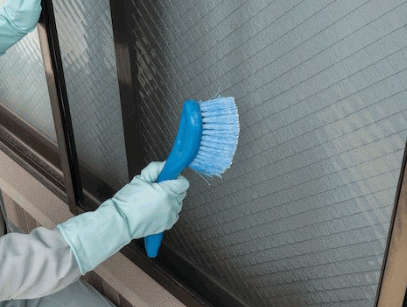
Why Is It Important To Clean Window Screens?
Keeping window screens clean is crucial for maintaining a fresh and healthy indoor environment. Regular cleaning not only enhances the appearance of your home by allowing natural light to brighten up the rooms but also promotes better airflow, reduces allergens, and extends the lifespan of the screens.
Clean window screens play a vital role in improving the overall air quality within your living space. Dust, pollen, and other outdoor pollutants are often trapped by the screens, so keeping them clear of debris can prevent these particles from entering your home.
This is particularly beneficial for individuals with allergies or respiratory issues, as it helps to create a cleaner and more breathable atmosphere. Regularly maintained window screens can contribute to a welcoming home environment by ensuring that your windows look their best from both the inside and outside.
Dig deeper: How To Clean Window Sills
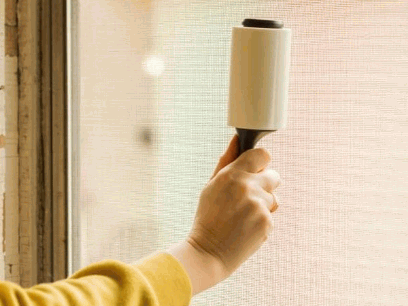
What Tools Do You Need To Clean Window Screens?
To effectively clean window screens without causing damage, you will need specific tools and supplies. These include a soft-bristled brush, a vacuum cleaner, soapy water solution, a gentle cloth, and screen care products designed to be chemical-free.
- Using a soft-bristled brush, gently scrub the screens to loosen dirt and debris, then vacuum them to remove loose particles.
- Next, dip a cloth in the soapy water solution and wipe down the screens, ensuring to avoid excessive moisture. Rinse the screens thoroughly with clean water to remove any leftover soap residue.
- Allow the screens to air dry completely before re-installing them.
This proper cleaning routine not only helps maintain the screens' appearance but also prolongs their lifespan.
Soft-Bristled Brush
A soft-bristled brush is a valuable tool for cleaning window screens effectively without causing damage. The gentle bristles help remove dust and debris without scratching the screens, making it an essential cleaning tool in your maintenance routine.
When using a soft-bristled brush, start by gently brushing the screen in a back-and-forth motion, focusing on areas with visible dirt or grime. Avoid applying excessive pressure to prevent bending or damaging the delicate mesh of the screen.
For stubborn spots, dip the brush in a mixture of mild soap and water to aid in loosening dirt. Remember to clean both sides of the screen for thorough maintenance.
After brushing, use a vacuum cleaner or a gentle burst of compressed air to remove any loosened debris for a truly spotless finish.
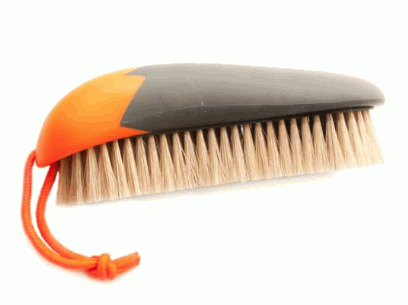
Microfiber Cloth
A microfibre cloth is a versatile and effective tool for wiping away dirt and grime from window screens. Its soft texture ensures a grime-free finish, making it an ideal accessory for maintaining sparkling clean screens.
The unique structure of microfibre material allows it to attract and trap dust and dirt particles efficiently, making the cleaning process quick and effective. By using a microfibre cloth, you can achieve streak-free results, leaving your screens crystal clear and free from smudges. The fine fibers of the cloth are gentle on delicate screens, preventing scratches and damage while providing a thorough cleaning. With just a few gentle wipes, your screens can look as good as new, enhancing your viewing experience with a pristine display.
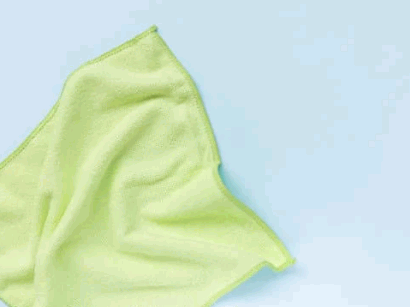
Vacuum Cleaner
A hoover is a handy tool for removing debris and dust from window screens efficiently. Its suction power allows for quick and effective cleaning, making it an essential device for your screen maintenance routine.
To ensure thorough cleaning and eliminate dust effectively, start by attaching the brush attachment or using the upholstery tool on your hoover. Gently run the Hoover nozzle along the screen surface, moving in a side-to-side and up-and-down motion. Be sure to apply light pressure to avoid damaging the delicate screen material. Pay extra attention to the corners and edges where dust tends to accumulate. Regular hoovering not only helps in keeping your window screens clean but also contributes to maintaining indoor air quality by reducing allergens.
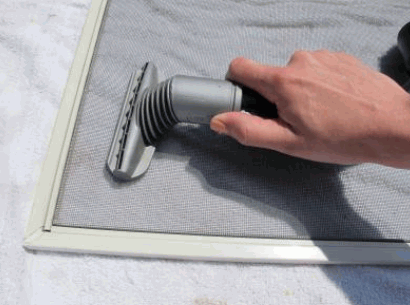
Dish Soap
Dish soap is a versatile and eco-friendly cleaning solution that can effectively remove dirt and grime from window screens. Its gentle formula makes it ideal for maintaining clean and bright screens without harsh chemicals.
Mixing dish soap with water creates a powerful yet gentle solution that effectively breaks down dirt, dust, and debris accumulated on window screens. The soapy mixture acts as a natural degreaser, cutting through grease and grime with ease. This method not only cleans the screens thoroughly but also helps prevent streaks or residues that can be left behind by harsh chemical cleaners. Using dish soap is a cost-effective and sustainable alternative to commercial cleaning products, contributing to a greener and more eco-friendly cleaning routine.
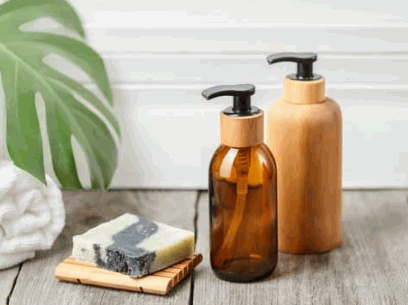
Bucket
A bucket is essential for holding the soapy water solution used to clean window screens effectively. It provides a convenient container for mixing the cleaning solution and facilitates the rinsing process during screen maintenance.
Using a bucket helps in creating a controlled and organized cleaning routine. By having all the necessary tools and supplies within reach in the bucket, the cleaning process becomes more efficient and streamlined. The bucket acts as a central hub for cleaning materials, reducing the chances of misplacing or losing items while moving from one area to another. This systematic approach ensures that each area receives the proper attention and thorough cleaning it needs for optimal maintenance.
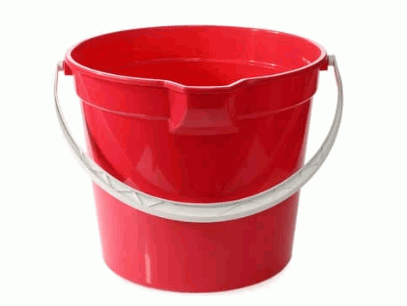
Water Hose
A water hose is an indispensable tool for rinsing and drying window screens after cleaning. Its high-pressure flow helps remove soap residue and dirt effectively, ensuring a thorough cleaning process for your screens.
Using a water hose for rinsing and drying window screens not only saves time but also provides a convenient and efficient way to ensure all the grime and debris are washed away.
When rinsing screens with a water hose, it is crucial to start from the top and work your way down, ensuring that each corner and edge receive a good rinse. Focus on using gentle pressure to avoid any damage to the delicate screen material while still achieving a deep clean.
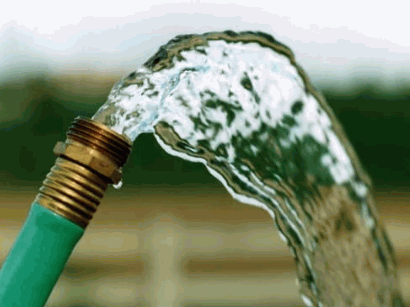
How To Clean Window Screens Without Removing Them?
Cleaning window screens without removing them is a convenient and effective DIY solution for maintaining clean and fresh screens. By following a few simple steps using common household items, you can easily keep your screens in pristine condition.
- Start by preparing a mixture of warm water and mild washing-up liquid in a bucket.
- Then, take a soft-bristled brush or sponge and dip it into the soapy water.
- Gently scrub the window screens, focusing on areas with visible dirt or grime. Be sure to tackle both sides of the screens for thorough cleaning.
- Once you've scrubbed them, rinse off the soapy residue with clean water, either using a hose or a damp cloth.
- Allow the screens to air dry completely before placing them back in the windows.
Regularly cleaning your window screens in this way will not only enhance your view but also improve the air quality inside your home.
Step 1: Remove Loose Dirt And Debris
- The first step in cleaning window screens without removing them is to remove any loose dirt, dust, and debris. This initial cleaning regime ensures that the screens are free of surface grime before proceeding with a deeper cleaning process.
One effective technique for eliminating surface dust and dirt from window screens is to use a handheld vacuum cleaner with a brush attachment. Gently run the brush over the screen surface, working from top to bottom to capture loose debris.
Another method involves using a microfibre cloth lightly dampened with a mixture of water and mild detergent. Wipe the cloth across the screen, focusing on areas with visible dirt or grime.
Both of these methods help prepare the screens for a more thorough cleaning, ensuring a clearer view when the windows are opened.
Step 2: Vacuum The Screens
Using a vacuum cleaner to clean window screens is an efficient and time-saving technique. By gently vacuuming the screens, you can remove embedded dirt and dust effectively, streamlining the cleaning process.
Not only does vacuuming the window screens help in maintaining a cleaner home environment, but it also ensures that the screens last longer by preventing dirt buildup. To maximize the effectiveness of this cleaning method, it is important to use the soft brush attachment on the vacuum cleaner to avoid causing any damage to the delicate screen material. Vacuuming is a quick and convenient way to keep your screens looking fresh without the need for extensive scrubbing or washing, saving you both time and effort.
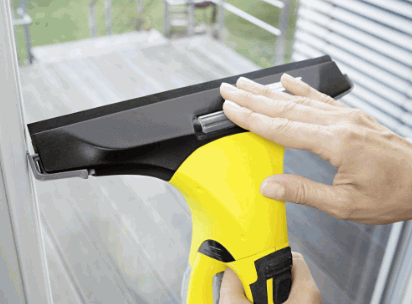
Step 3: Mix Soap And Water Solution
Creating a soap and water solution is a crucial step in cleaning window screens effectively. By mixing the soap with water in a bucket, you can prepare a gentle yet powerful cleaning solution for scrubbing the screens.
This soap and water mixture works wonders in loosening dirt, dust, and grime from the screens without causing any damage. The gentle nature of the soap helps to break down the build-up, making it easier to remove with a soft cloth or sponge. Using a mild soap solution ensures that the delicate materials of the window screens are not harmed during the cleaning process. It is essential to avoid harsh chemicals that can potentially strip the screens or leave behind residue that may affect their appearance and functionality.
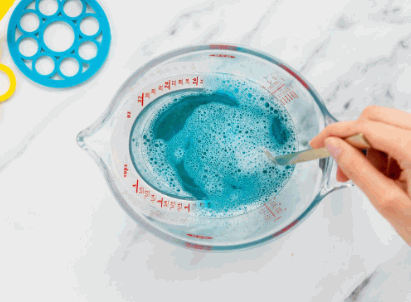
Step 4: Scrub The Screens
Scrubbing the window screens with a soft-bristled brush and soapy water solution helps remove stains and stubborn dirt effectively. This step is crucial for achieving a thorough cleaning and restoring the screens to a sparkling clean condition.
To effectively remove stains and dirt build-up, start by wetting the brush with the soapy water solution and gently scrub each section of the screen. Pay special attention to the corners and edges, where dirt tends to accumulate. Work in small circular motions to dislodge stubborn grime. Rinse the screen with clean water to wash away the loosened dirt. For tougher stains, you can let the soapy water solution sit on the screen for a few minutes before scrubbing. This meticulous process ensures a deep and comprehensive cleaning for your window screens.
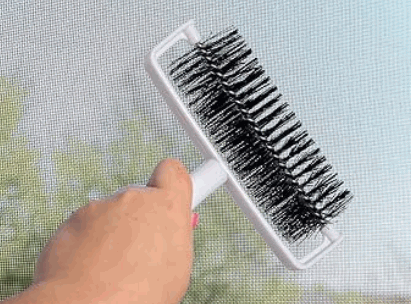
Step 5: Rinse With Water Hose
Rinsing the window screens with a water hose is essential to remove soap residue, dirt, and debris effectively. This step ensures that the screens are thoroughly cleaned and ready for drying without any leftover cleaning solutions.
The force of the water hose helps to dislodge any stubborn grime or particles that may have accumulated on the screens during the cleaning process. By thoroughly rinsing the screens, you can be sure that all traces of cleaning agents are washed away, leaving behind crystal-clear windows. The water hose facilitates the drying process by removing excess water, enabling the screens to dry faster and preventing water spots. This simple step of rinsing with a water hose not only ensures cleanliness but also contributes to the overall appearance and longevity of your windows.
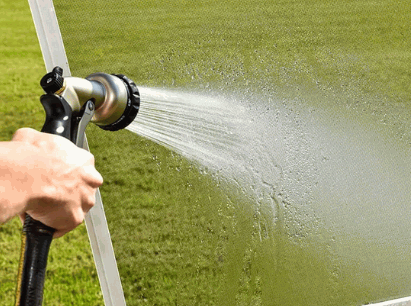
Step 6: Dry The Screens
Drying the window screens properly after cleaning is crucial to prevent water spots and damage. Placing the screens in sunlight or allowing them to dry in fresh air ensures a quick and thorough drying process for sparkling clean screens.
- This step is essential as improperly dried window screens can lead to unsightly water spots, mold, or even structural damage.
- To aid in the drying process, it's advised to prop the screens up against a wall or lay them flat on a clean surface, ensuring proper air circulation.
- Periodically flipping the screens during drying helps to achieve an even dryness.
By following these simple yet effective methods, you can maintain your window screens in top condition and enhance the overall aesthetics of your home.
What Are Some Tips For Cleaning Window Screens?
Maintaining clean window screens requires following some essential tips and best practices. Using gentle cleaning solutions, incorporating cleaning tricks, and ensuring regular cleaning frequency is key to preserving the screens' cleanliness and letting natural light brighten up your home.
- One effective tip is to create a DIY cleaning solution by mixing equal parts water and vinegar in a spray bottle, which not only cleans but also disinfects the screens.
- Another useful tip is using a lint roller to quickly remove dust and debris from in-between screen crevices.
- Establishing a weekly cleaning routine where you dust off the screens with a dry microfibre cloth and then give them a gentle wash can significantly prolong their lifespan and keep your windows looking crystal clear.
Clean Screens Regularly
Regularly cleaning window screens is a maintenance tip that ensures they remain well-maintained and free of dirt and grime. Establishing a cleaning routine helps preserve the screens' appearance and functionality for an extended period.
Keeping window screens clean enhances the overall aesthetic of your living space, allowing more natural light to filter through. When debris accumulates on screens, it can obstruct airflow and hinder visibility. By incorporating regular cleaning into your household maintenance routine, you can prevent issues like mold growth and insect infestations.
Simple practices such as gently vacuuming or washing screens with mild soap and water can go a long way in ensuring your screens stay spotless and in optimal condition.
Use Gentle Cleaning Solutions
Opting for mild cleaning solutions when cleaning window screens is a valuable screen care tip. Eco-friendly and gentle solutions help preserve the screens' quality and appearance without causing damage or harsh chemical exposure.
These mild solutions not only protect the environment by minimizing chemical runoff and pollution but also contribute to maintaining healthy indoor air quality. By choosing eco-friendly options, you ensure a safer living environment for you and your family.
These mild cleaning solutions effectively remove dirt, dust, and grime from window screens, leading to clearer views and improved natural light transmission. By adopting a sustainable approach to screen care, you can enjoy a sparkling clean home while reducing your carbon footprint.
Be Careful With Pressure Washers
When cleaning window screens, it's essential to be cautious with pressure washers to avoid damage. Harsh scrubbing or high-pressure water can lead to screen damage, so using an effective and gentle technique is key to preserving the screens' integrity.
One recommended method is to start by removing the screens and laying them flat on a soft surface, such as a towel or blanket. Using a mild soap or detergent mixed with warm water, gently scrub the screens with a soft brush or microfiber cloth to remove dirt and debris. Rinse the screens thoroughly with a gentle stream of water, taking care not to use excessive force. Ensure the screens are completely dry before re-installing them to prevent any potential mold or mildew growth.
Avoid Harsh Scrubbing
Avoiding harsh scrubbing during the cleaning process is crucial for maintaining window screens in good condition. Abrasive cleaning methods can cause damage or scratches, so opting for gentle and non-abrasive techniques is recommended to ensure the screens' longevity.
When cleaning window screens, it's best to use a soft cloth or sponge with a mild cleaning solution. A mixture of water and gentle dish soap can effectively remove dirt and grime without risking any harm to the delicate screen material.
Consider using a handheld vacuum or a soft brush attachment to remove any loose debris before wiping down the screens. Regular maintenance and gentle cleaning practices will not only preserve the appearance of your window screens but also extend their lifespan, saving you from costly replacements.
Protect Screens From Direct Sunlight
Protecting window screens from direct sunlight helps prevent damage and extends their lifespan. Prolonged exposure to UV rays can cause fading or deterioration, so placing screens strategically to avoid direct sunlight can preserve their quality and functionality.
One effective way to shield window screens from direct sunlight is by utilizing window coverings such as blinds or curtains. These coverings act as barriers, preventing harsh UV rays from directly hitting the screens. Regularly cleaning the screens to remove dust and debris can also contribute to their longevity by reducing the risk of build-up that can be exacerbated by sun exposure. By taking these simple precautions, homeowners can ensure that their window screens remain in optimal condition for a longer period.

